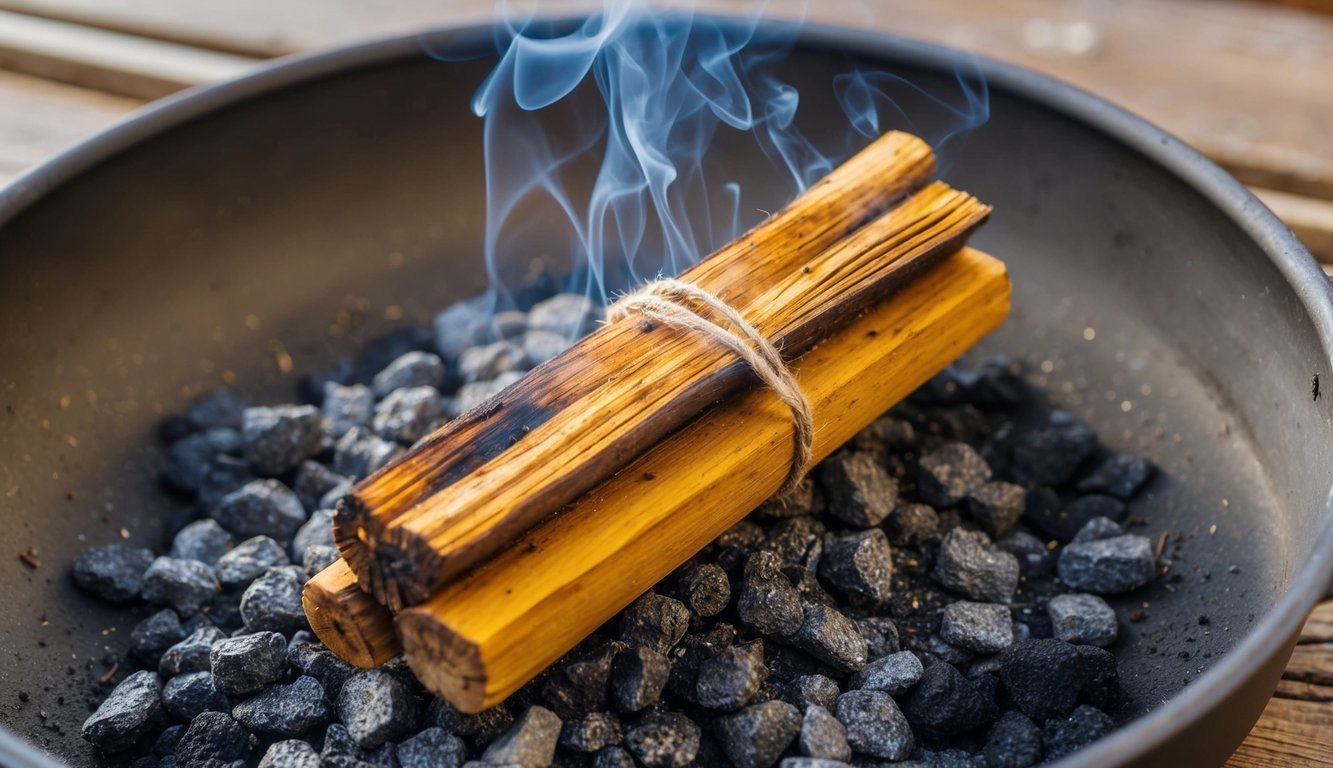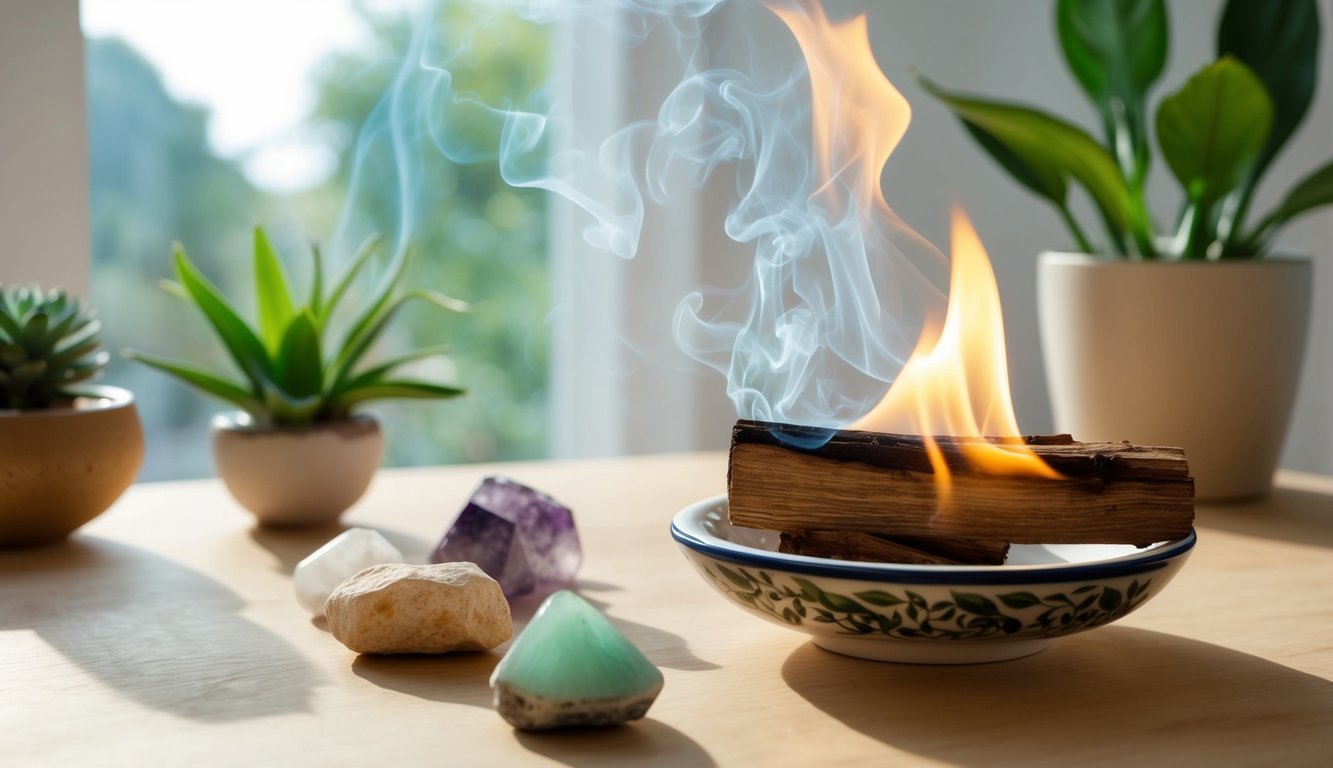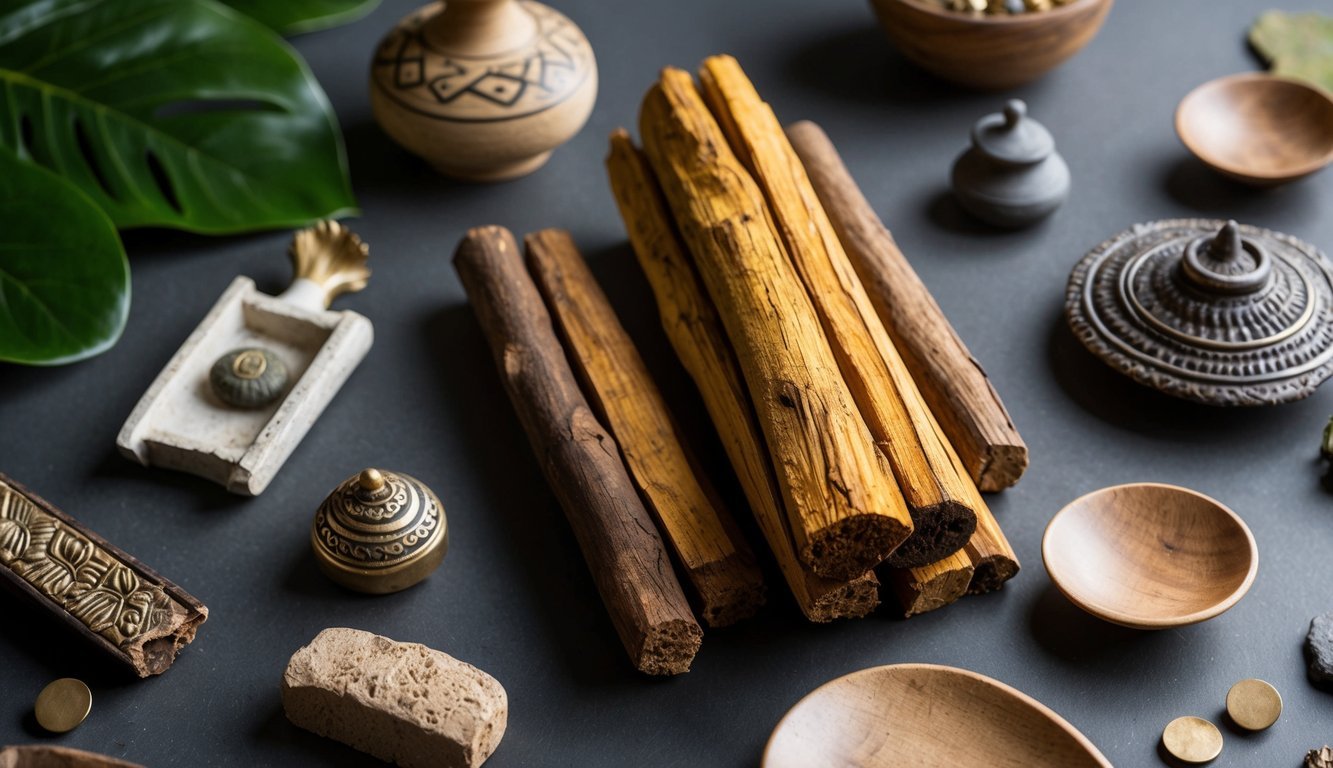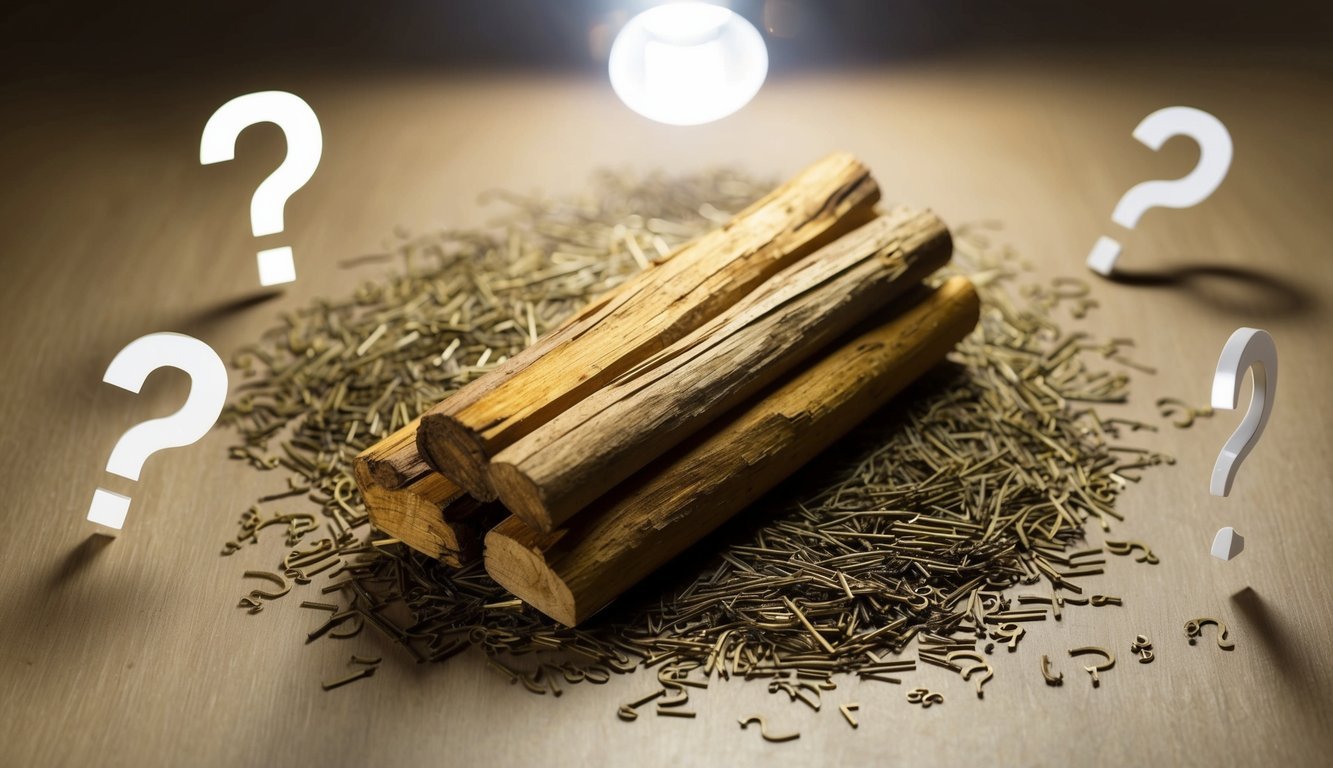PsychNewsDaily Publishers
100 Summit Drive
Burlington, MA, 01803
Telephone: (320) 349-2484
PsychNewsDaily Publishers
100 Summit Drive
Burlington, MA, 01803
Telephone: (320) 349-2484
Palo Santo, or Bursera graveolens, is a South American wood known for its soothing aroma, spiritual significance, and potential health benefits, including stress relief and anti-inflammatory properties.

Palo Santo, or Bursera graveolens, is often referred to as “holy wood.” It comes from South America and is cherished for its soothing aroma. I find it fascinating how shamans have used this wood for centuries in spiritual ceremonies.
When you burn palo santo, it releases a sweet, calming scent that many people say helps to clear negative energy. Honestly, it makes me think about how important traditions can be in connecting us to nature.
Traditionally, the wood is harvested in a way that respects the tree. After being cut, it’s left to cure for a few years. The longer it cures, the richer the aroma becomes. I wonder if that’s part of the reason why it feels so special to use in rituals.
People often use palo santo for meditation, relaxation, and focus. You might find it in essential oils or incense sticks too. Its benefits go beyond just the scent. Many believe that it can help with healing and renew the spirit during tough times.
It’s amazing how a simple piece of wood can carry so much history and meaning. When I use palo santo, I can almost feel the generations before me who used it for similar purposes. It’s like connecting with a timeless tradition that still resonates today.

Palo Santo wood has a unique and captivating aroma that many people find soothing. It’s not just about how it smells but also the many benefits tied to its use in aromatherapy and health.
I’ve found that the rich scent of Palo Santo is perfect for aromatherapy. The calming aroma is often compared to frankincense and myrrh, both praised for their spiritual qualities. When burned, it releases a sweet, woodsy fragrance that can really lift the mood.
I’ve noticed that many people light it during meditation to create a peaceful space. The essential oil of Palo Santo contains compounds like limonene, which is known for its relaxing properties. Honestly, it makes me think of sitting quietly, letting the fragrance wash over me. I often hear folks say that it helps ease anxiety and reduces stress.
Palo Santo also offers impressive health benefits. People have used it for generations to help with various ailments. For instance, its anti-inflammatory properties may assist with pain relief, especially for those battling arthritis or joint pain.
I’ve read stories of folks using it to alleviate headaches and cold symptoms too. And it doesn’t stop there. Many claim it can help with throat pain and even flu-like symptoms. It’s often seen as a natural remedy for stress and depression. If you’re looking for a gentle way to promote relaxation or calmness, Palo Santo might just be worth a try!

Palo santo wood offers a rich blend of practical uses and rituals that can enhance daily life and spiritual practices. It’s fascinating how this wood not only smells wonderful but also brings a certain warmth and comfort to our surroundings.
Using palo santo for cleansing spaces is something I’ve found particularly refreshing. When I burn it, I often feel like I’m inviting positive vibes while banishing negative energy. The smoke is believed to purify the air and lift the mood in the room, almost like a gentle hug.
I often do this during my yoga sessions. It adds this whole new layer of spiritual purifying to the experience. I light a stick and let the smoke waft around while I focus on my breath. You know, it’s kind of like smudging, but palo santo feels a bit lighter—maybe even more playful? The ritual of walking through each room feels grounding, reminding me to be present.
Honestly, there are so many ways to bring palo santo into everyday life. I love using it in my home as a natural incense. Lighting it while reading or journaling feels therapeutic. The scent seems to enhance my creativity, which is a big plus! Sometimes, I just keep a piece near my desk.
Using a palo santo diffuser is another trick I’ve picked up. It spreads that wonderful aroma without the flame. It’s perfect for when I have friends over; the inviting scent creates a warm atmosphere. Even candles made with palo santo bring a lovely ambiance. You really can’t go wrong with it!

When I think about palo santo wood, I can’t help but feel there’s a real responsibility to protect this precious resource. Originating mainly from Ecuador and Peru, the conservation of the palo santo tree is so important. Overharvesting can threaten its populations, and we need to be mindful of how we source it.
Did you know that the International Union for Conservation of Nature has highlighted the importance of sustainable practices? They’ve noted that ethical sourcing of palo santo wood is key. I often ponder—how do we balance our needs with nature’s well-being?
I wonder if people realize that sustainable practices not only protect ecosystems but also ensure that future generations can enjoy palo santo’s benefits. When we buy ethically sourced wood, we’re not just making a purchase; we’re supporting communities that rely on these trees.
Harvesting should be done responsibly, allowing trees to grow back. I’ve read that some initiatives focus on collecting only fallen branches rather than cutting down trees. That’s a smart way to preserve the species while still allowing us to enjoy its unique fragrance.
It really makes me think that every choice we make can have an impact. So, let’s choose wisely and support those who prioritize sustainability in their harvesting methods. It’s a small step, but it can lead to significant change.

Palo santo wood has a rich cultural history. Indigenous people in South America have used it for centuries in spiritual practices. It’s believed to bring good fortune and foster wellness. I find it fascinating how such a simple piece of wood can hold so much meaning.
Traditionally, people would use palo santo for ritual smudging. They’d burn it to cleanse spaces or set intentions. I wonder if it’s the scent that makes it so special. The aroma is a lovely mix of citrus and a hint of sweetness, which definitely adds a calming vibe.
In modern times, palo santo is gaining popularity. It’s found in essential oils and wellness products. Many of us are drawn to its earthy essence. I think it creates a sense of connection when we use it in our daily lives.
It’s interesting to see how its use has evolved. From folk medicine to a trendy item in wellness circles, it’s a journey. People now often light palo santo while meditating or doing yoga. I love that it encourages creativity and a mindful atmosphere.
Travelers often bring palo santo back as a souvenir. It’s not just a piece of wood; it carries stories and traditions. When I hold it, I can almost feel the energy of the places it’s been. Isn’t it amazing how something so rooted in culture can adapt and grow with us?

Let’s dive into some questions many folks have about palo santo wood. This wood has become pretty popular, and it’s not just for its aroma. People are curious about its benefits, history, and even how to use it right.
Using palo santo is often linked with stress relief. The scent is known to have calming properties and may help create a peaceful atmosphere. I wonder if that’s why so many people turn to it during meditation or relaxation time. It’s not just about the smell, though; some folks say it helps clear negative energy, making them feel lighter.
To get the most from palo santo, you’ll want to light a stick at one end until it catches fire. After a few seconds, blow it out and let the smoke waft around. I’ve found that moving it in a circle can help cover more space, almost like creating a little cloud of bliss. It’s all about finding what feels right for you.
Palo santo, or “holy wood,” comes from South America, particularly Peru and Ecuador. The tree is part of the Burseraceae family, related to frankincense and myrrh. Sadly, it’s becoming rare because it’s over-harvested. Its use goes back centuries, especially for spiritual rituals. I think that’s fascinating, right?
Prices can vary quite a bit, but generally, you might pay anywhere from a few dollars for a small bundle to over $20 for higher quality sticks. It’s like anything else; you’re often paying for the quality and sustainability of the source. I sometimes wonder if the price tag truly matches the experience.
People often choose palo santo for its unique scent, which some find sweeter and more uplifting than sage. Sage is usually more about cleansing, while palo santo adds a cozy, warm atmosphere. It’s like comparing apples and oranges. I think it really boils down to what vibe someone is going for in their space.
Sustainability is definitely a concern. With more demand, the trees are at risk.
To help, you can look for ethically sourced palo santo. Some companies focus on sustainable harvesting, which is better for the environment.